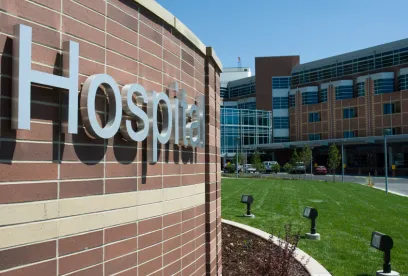On September 17, 2019, the D.C. District Court held that the Centers for Medicare & Medicaid Services (CMS) exceeded its statutory authority when it cut the payment rate for clinic services at off-campus provider-based departments (OCODPs). The hospital industry has every right to be pleased with this decision that granted summary judgment in favor of the American Hospital Association, the Association of American Medical Colleges, and various hospital plaintiffs.
Although hospitals are breathing a sigh of relief, for those following the case, the outcome was not entirely unexpected. The case comes out of the same court that dealt a blow to CMS’ efforts to reduce payments associated with OCODP services when it shot down the 340B drug reimbursement cuts. However, Judge Collyer’s decision was a broad denouncement of CMS’ approach, with potential implications to limit future selective payment reductions under the Outpatient Prospective Payment System (OPPS), and not just for OCODPs.
Background
In November 2018, CMS issued a rule (Final Rule) designed to impose “site neutrality” for the most common outpatient hospital services delivered in OCODPs that are excepted from the current statutory site neutrality law.In adopting the Final Rule, CMS extended the payment cuts mandated in Section 603 of the Bipartisan Budget Act of 2015 (BiBA Section 603) and its implementing regulations. BiBA had significantly reduced Medicare reimbursement for OCODPs that were not already in existence (or in a “mid-build”) as of November 2, 2015 unless they were “dedicated emergency departments”. After that date, payment for any new OCODPs was intended to approximate what would be paid for the service if it had instead been performed in a physician office, or in CMS’ rough justice, 40% of the OPPS rates. Off-campus OCODPs billing under OPPS as of November 2, 2015 were deemed “excepted” (grandfathered) for purposes of BiBA 603, and insulated from the rate reductions.
Notwithstanding BiBA 603, CMS remained concerned over the continuing high rate of growth of OCODP volume. On July 25, 2018, CMS proposed to implement a method for controlling perceived increases in the volume of covered outpatient services by capping the Medicare OPPS rate for clinic visit services furnished by any off-campus OCODP, whether or not it was excepted (grandfathered) under BiBA 603. Under the proposed rule, such services would effectively be reimbursed on a site-neutral basis, at rates that were functionally equivalent to physician office/off-campus rates.
CMS received almost 3,000 comments on the proposed rule, many of which argued that CMS lacked statutory authority to implement the rate reduction. Nonetheless, on November 21, 2018, CMS issued the Final Rule implementing the proposed reimbursement change, effective January 1, 2019.
The Court’s Analysis
In reaching her decision, Judge Collyer found that CMS exceeded its authority when it proposed to implement its new reimbursement approach in a non-budget neutral manner as required by statute, by seeking to characterize the new rates as a change in methodology.
By statute, adjustments under the OPPS must be made in a budget neutral manner, i.e., so that the estimated amount of expenditures for the year would not be expected to vary from the estimated amount had the adjustments not been made. In adopting the Final Rule, however, CMS adopted a convenient, if self-serving, position that the reimbursement changes referred to a method for controlling increases in the volume of covered OCODP services, rather than an adjustment that would be limited by the budget neutrality provisions of the Social Security Act.
As we reported in our earlier analysis, CMS implemented its proposed method in a non-budget neutral manner based on this argument. The court disagreed with this interpretation, and found that CMS had overstepped its authority by “shoehorning” its approach into a multi-faceted, well-developed payment scheme adopted by Congress.
Take-Aways
The ruling is far better for the hospital industry than if the court had narrowly ruled on BiBA 603 statutory impact for the 2019 reimbursement changes. This will apply to limit future selective payment reductions under OPPS, and not just to OCODPs.
The court did not need to address one other compelling argument raised by the plaintiffs. In adopting BIBA 603, Congress had drawn a line in the sand around those that had been billing OPPS prior to November 2, 2015. The Final Rule ignored that distinction, and erased a significant portion of the benefits of the excepted (grandfathered) locations. In so doing, CMS was effectively overriding the negotiated final word of Congress. We expected that this would offend the courts. However, and importantly, this was not the basis for the Court’s decision. Rather, the court ruled more broadly, focusing on the core powers of CMS to make reimbursement changes under the OPPS system.
Ultimately, in the court’s view, changes needed to be across the board (through changes to the OPPS adjustment factor) or budget neutral (where a payment reduction on one APC would be offset by an increase on another). CMS, the Court ruled, did neither, and, therefore, its 2019 payment reduction was beyond their power (“ultra vires”).
As for remedies, the Court did not order CMS to start writing checks to hospitals. Rather, it is requiring the parties provide a joint status report by October 1, 2019. On September 23, CMS filed a motion requesting that the court remand the case without vacating the challenged portion of the Final Rule, or, alternatively, that the court stay proceedings for sixty days while the government considers an appeal.
Bottom line, it may be a while before hospitals get their money back, or even start being paid correctly for current services. CMS has 60 days to file an appeal once the judgment is entered (which as of the date of this writing has not yet happened, as noted above). Assuming CMS appeals this decision (as it did in the 340B case, referenced above) it might be quite a while before hospitals see their reimbursements restored.





 />i
/>i

